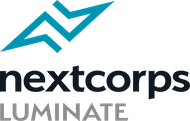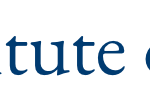During a pandemic, Isaac Newton had to work from home, too. He used the time wisely.
By Gillian Brockell, Washington Post
Isaac Newton was in his early 20s when the Great Plague of London hit. He wasn’t a “Sir” yet, didn’t have that big formal wig. He was just another college student at Trinity College, Cambridge.
It would be another 200 years before scientists discovered the bacteria that causes plague, but even without knowing exactly why, folks back then still practiced some of the same things we do to avoid illness.
In 1665, it was a version of “social distancing” — a public health tool making a comeback this week as governments, schools and many businesses, including The Washington Post, send people home to try to slow the spread of the novel coronavirus.
Cambridge sent students home to continue their studies. For Newton, that meant Woolsthorpe Manor, the family estate about 60 miles northwest of Cambridge.
Without his professors to guide him, Newton apparently thrived. The year-plus he spent away was later referred to as his annus mirabilis, the “year of wonders.”
First, he continued to work on mathematical problems he had begun at Cambridge; the papers he wrote on this became early calculus.
Next, he acquired a few prisms and experimented with them in his bedroom, even going so far as to bore a hole in his shutters so only a small beam could come through. From this sprung his theories on optics.
And right outside his window at Woolsthorpe, there was an apple tree. That apple tree.
A descendant of the apple tree whose fruit helped Isaac Newton discover gravity grows on the campus of the National Institute of Standards and Technology in Gaithersburg, Md. (Calla Kessler/The Washington Post)
The story of how Newton sat under the tree, was bonked on the head by an apple and suddenly understood theories of gravity and motion, is largely apocryphal. But according to his assistant, John Conduitt, there’s an element of truth. Here’s how Conduitt later explained it:
“ … Whilst he was musing in a garden it came into his thought that the same power of gravity (which made an apple fall from the tree to the ground) was not limited to a certain distance from the earth but must extend much farther than was usually thought. ‘Why not as high as the Moon?’ said he to himself..”
In London, a quarter of the population would die of plague from 1665 to 1666. It was one of the last major outbreaks in the 400 years that the Black Death ravaged Europe.
Newton returned to Cambridge in 1667, theories in hand. Within six months, he was made a fellow; two years later, a professor.
So if you’re working or studying from home over the next few weeks, perhaps remember the example Newton set. Having time to muse and experiment in unstructured comfort proved life-changing for him — and no one remembers whether he made it out of his pajamas before noon.














